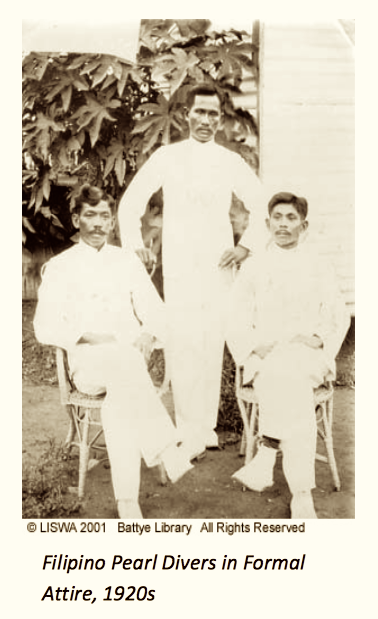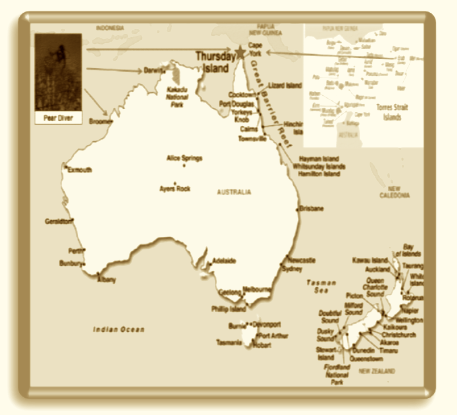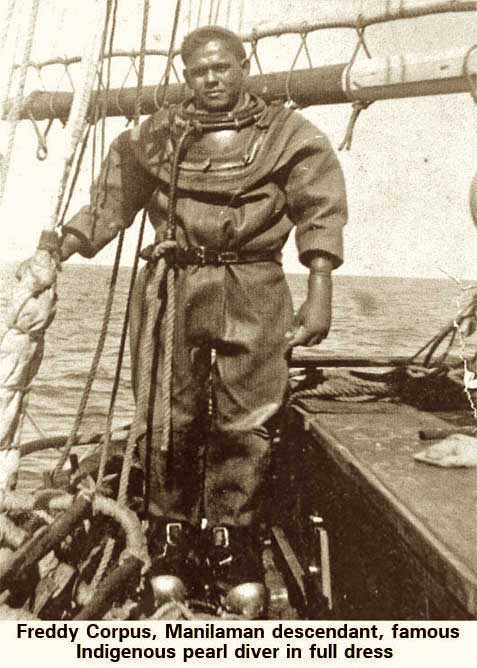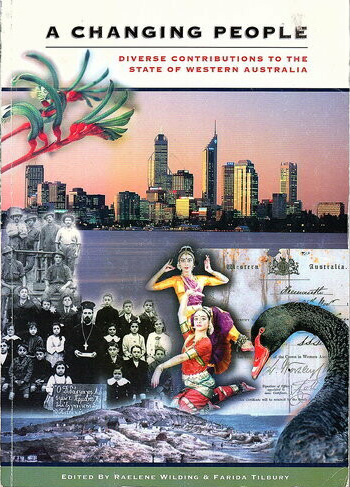In the beginning…
Refreshingly, what was expected of her was the same thing that was expected of Lara Stone: to take a beautiful picture.
The Late 1800s. People-to-people relations preceded formal Philippines- Australia relations with the first wave of Filipino migrants in the late 1800s.
A small group of Filipinos came to the Northern Territory as divers and processors of pearl shells in the local pearling industry. Though actually originating from the Visayas and Mindanao, they were then known as “Manilamen,” as Manila was the only known international gateway from the Philippines at that time.
Australian writer Sky Phillips defined Manilamen as “Filipino divers from pearling ships.” In 1908 Louis Becke’s “The Pearl Divers of Roncador Reef,” the Manilamen divers figured prominently as divers of Roncador Reef in the Solomon Islands, then still part of British Australia. The Manilamen were among the diff erent Asian nationals who went to Australia as pearl divers and constituted the biggest number among them (Source: National Historical Commission of the Philippines).
Commercial quantities of pearl shells were taken from the Torres Strait starting in 1870, and Filipino shell divers were hired to gather beche-de-mer. Missionary Fr. Ferdinand Hartzer wrote of his arrival on Thursday Island in 1884: “We found the place populated by a small number of Europeans and about 400 Catholics from Manila, scattered amongst the various islands. They were fishing for pearls”. The majority were young single men from Manila, Cebu, Leyte, Luzon, Masbate, Panay, and Samar. Most of them settled on Thursday or Horn Island, sometimes after living for a time on the outer islands, including Darnley, Nepean, Skull, Warrior, and Yam Island (Source: Australian Postal History and Social Philately).
In addition to the pearling industry, “Manilamen” were employed as wharf labourers and seamen, as the maritime industries of Port Darwin relied almost exclusively on an Asian labour force prior to 1910.
1950s. The 1947 Census shows there were only 141 Philippines-born people in Australia. In the 1950s, the Colombo Plan opened Australia’s doors to some Filipino students. The period also saw the recruitment of skilled Filipino tradesmen and professionals.
1970s & 1980s. In the 1970s, martial law in the Philippines and the end of the White Australia Policy heralded a second wave of Filipino migration to the country, which increased rapidly in the 1980s, mainly through the migration of Filipina brides.
2000 – Present. The year 2004 marked a shift in the migration profile, with most Filipinos coming in as skilled workers/professionals. At present, skilled visas account for nearly three-quarters of all permanent visas granted to Filipinos (Source: Australian Department of Immigration and Citizenship).

…Filipinos positively contributing to Australian society
According to the 2011 Australian Census, there are 171,233 Philippines-born in Australia (residents, permanent residents, and citizens), an increase of 42.1 percent from the 2006 Census. The 2011 distribution by state and territory showed New South Wales had the largest number with 70,388, followed by Victoria (38,002), Queensland (29,462), and Western Australia (17,231). They comprise 3.2 percent of the overseas-born or 0.8 percent of the total Australian population. Those claiming Filipino ancestry number even higher at 224,732. On the other hand, the Commission on Filipinos Overseas (CFO) estimates the number of Filipinos in Australia at 384,637 (as of December 2011).
Filipino migrants have made and continue to make positive contributions to Australian society. The labour force participation rate of the Philippines- born is 77 percent, well above the national average of 65 percent. They can be found in the services sector as accountants, software and applications programmers and registered nurses. They help build the infrastructure backbone of Australia as engineers and miners, construction workers, welders and motor mechanics. They are also active in the civic, political and spiritual lives of their communities. Australia has recognized their contributions – there are a number of Filipinos who have been awarded the Order of Australia, typically in the area of community service, social justice, women’s affairs and multiculturalism. Compared to 62 per cent of the total overseas-born population, 54 per cent of the Philippines-born people in Australia arrived in Australia prior to 2001. Among the total Philippines-born in Australia at the 2011 Census, 15.7 per cent arrived between 2001 and 2006 and 26.8 per cent arrived between 2007 and 2011. The Philippines is among the top 10 source countries for recent migrant arrivals in Australia (Source: Australian Department of Immigration and Citizenship). — Excerpted from the first edition of the Filipinos in Australia Factbook, Philippine Embassy Canberra.

Filipinos in Australia Factbook is a project of the Philippine Embassy in Canberra that aims to recognize the close historical and cultural ties of the Philippines and Australia dating back to the 19th century, and the significant contributions of Filipinos to Australian history and culture. Content contributions from readers are welcome to ensure that the next editions of the Factbook are up to date and that the significant contributions of other Filipino pioneers in Australia are reflected and recognized.
philembassy.org.au
Filipinos in Australia Factbook
Filipinos in Western Australia

Severo Corpus
Severo Corpus arrived in Broome from the Philippines in the late 1880s and married Emma Nyobinjie, a Yawuru Aboriginal woman. His grandson, Freddy Corpus, who was born in Broome in 1928 to Esther Corpus and Bornean pearl diver Achil bin Salleh, is one of the last surviving hard-hat pearl divers to have foraged for pearl shells in Australia. He has been honored as the patron of Broome’s Shinju Matsuri Festival as a living link to its pearling past and a representative of its multicultural heritage. Freddy Corpus now lives in Darwin and is the patriarch of a big clan – 16 children, 56 grandchildren, and 26 great-grandchildren (Source: The West Australian, 3 September 2012)
Telesforo Ybasco
Ybasco (born 1879 in Daet, Camarines Norte) migrated to Australia and married an Australian, Theresa Marquez of Broome, Western Australia. He had had 20 years of pearling experience at Broome before setting up a pearling joint venture with an Australian couple in 1947. The initially successful venture ended acrimoniously when Ybasco sued his Australian partners in 1948 for non-payment of his share of the profits. The claim was dismissed by an Australian judge in October 1948 on the grounds that Ybasco was neither a natural born or naturalised British subject, and was unqualified to engage in the business under the Pearling Act, rendering the agreement null and void. (Sources: The Daily News, 27 September 1948, Northern Times, 21 October 1948).
Ybasco’s daughter, Rosalind Ybasco Lopez, left Australia in 1949 at the age of fifteen and came to settle in the Philippines. An August 2000 case involving Rosalind became one of the landmark cases on the jus sanguini principle of acquiring Philippine citizenship after she was adjudged a natural-born Filipino citizen capable of holding an elective position despite being born in Broome, Australia in 1934 (Source: Supreme Court of the Philippines).

The Filipino-Australian Intercultural Community in Western Australia
by Michael Pinches
The first Filipinos came to Western Australia in the 1870s as divers, artisans, and labourers during the growth of the pearling industry in Broome. They came on fixed-term labour contracts, but, as with the Japanese, Chinese, and Malay migrants who also participated in this industry, some of them stayed and raised families with local Aboriginal women. Known in the northwest as ‘Manila men’, these early Filipino migrants left their mark through the two Catholic churches they helped build in Broome and Beagle Bay, and in particular the fine pearl shell inlay they used to decorate the church interiors. They are also known through the street names and gravestones they left behind, as well as the cooking practices, Filipino words, music, dance, and family names they passed on to some of their descendants. According to some present-day Perth-based Filipino Australians, the well-known Filipino chicken or pork dish, adobo, is still cooked among some of these families. Filipino melodies and guitar-playing techniques continue to be evident in the music of the region, and some of the descendants of the Manila men are said to still use expressions such as Lolo and Lola, the terms for grandmother and grandfather in Tagalog, the language spoken in and around Manila. – Excerpt from the article of Michael Pinches, The Filipino Australian Intercultural Community in Western Australia. A Changing People: Diverse Contributions to the State of Western Australia, Department of the Premier and Cabinet 2004.
Dr. Michael Pinches is Associate Professor in Anthropology and Sociology at the University of Western Australia. He is the author of a number of articles on class, culture, urbanisation, and politics in the Philippines.

